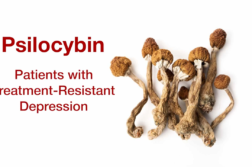COLUMBUS, Ohio. (Ivanhoe Newswire)— When the World Health Organization declared COVID a pandemic in March, many Americans sheltered in place, working remotely whenever possible. Since then, some have returned to the office, but many have not and as COVID cases continue to climb there is growing stress surrounding going back to work.
Some of us may welcome a return to an in-person workspace after months of being at home. But what you left months ago is most likely not the routine you’ll be returning to.
K. Luan Phan, MD, a psychiatrist at The Ohio State University Wexner Medical Center explained, “Now they’ve got to re-shift again. And it’s not going back to the normal workplace, it’s going back to a modified workplace.
Dr. Phan is an expert in behavioral health. He says uncertainty over a long period of time creates unhealthy levels of stress. He says to alleviate anxiety, employers should create a return to work plan that outlines safety precautions. Those may include daily temperature checks, keeping workspaces more than six feet apart, providing face coverings and meeting one-on-one instead of in groups. Dr. Phan also says the physical ways we used to show co-workers support are no longer appropriate.
Dr. Phan elaborated, “We shake hands, we give hugs, we give high fives and ultimately with a face mask on, we can’t express our emotions in a way that we typically would.”
Dr. Phan says workers will need to verbalize support for each other instead, as we reconnect in a new workplace environment.
Dr. Phan says right now, it’s important to not let your guard down. It’s normal to relax once you get into a familiar setting. Continue practicing good hand hygiene and keep hand sanitizer and wipes nearby. And don’t go to work if you don’t feel well.
Contributors to this news report include: Cyndy McGrath, Executive Producer & Field Producer; Kirk Manson, Videographer; Roque Correa, Editor.
To receive a free weekly e-mail on Medical Breakthroughs from Ivanhoe, sign up at: http://www.ivanhoe.com/ftk
MEDICAL BREAKTHROUGHS
RESEARCH SUMMARY
TOPIC: MANAGING BACK TO WORK STRESS DURING COVID
REPORT: MB #4819
BACKGROUND: In March, the World Health Organization declared COVID-19 a pandemic and a public health threat. In an attempt to prevent the virus from spreading and limit exposure many shelter-in-place rules were enacted and safer at home was encouraged to everyone who had the resources to do so. At this point many people began to work remotely from home and have been doing so for the majority of 2020. Thirty-one percent of workers who were employed in early March switched to work from home by the first week of April. Although the stay at home orders have relaxed and been fully lifted in some areas, many have continued to work remotely. Now as many people consider returning or are being asked by employers to return to the workplace, anxiety and worry about risk of infection is high.
(Source: https://www.bls.gov/opub/mlr/2020/article/ability-to-work-from-home.htm)
PREVENTION: Many shared workplaces are assessing their risks and creating safety and prevention practices to ease anxiety and allow employees to safely return to the workplace. Preventative workplace safety measures include ensuring building ventilation systems are operating correctly and effectively, increasing circulation of outdoor air whenever possible, identifying common work areas where employees could come in close contact with each other. Also, modifying seats, furniture, and workstations for more distance, installing plastic shields or barriers to separate employees, replacing high contact items such as coffee and snacks with individual pre-packaged items, removing chairs to maintain social distancing, applying tape on floors and walls to enforce social distancing and so on. Businesses are also encouraged by the Centers for Disease Control to conduct daily health checks, encourage employees with symptoms or are feeling unwell to stay home, provide employees with personal protective equipment such as masks and disinfectant, staggering shifts, and posting signage in common areas and entrances reminding employees of safety measures.
(Source: https://www.cdc.gov/coronavirus/2019-ncov/community/office-buildings.html
NEW NORMAL: On a daily basis, employers and employees should practice active safety precautions. This includes disinfecting high touch surfaces such as surfaces, doorknobs, faucets, toilets, telephones, keyboards, workstations, counters, desks, handrails, printers, copiers, pens and writing utensils, and drinking fountains. If surfaces are dirty, clean them with soap and water and let dry completely before applying disinfectant. Only use disinfectants that are EPA-approved for use against the virus that causes COVID-19. Follow all instructions on products including quantity to use and proper amount of time it needs to be left on a surface to be disinfected. Give employees time to wash hands and access to clean water soap and paper towels. Remind employees to wash hands for at least 20 seconds and only use hand sanitizer with at least 60 percent alcohol.
(Source: https://www.cdc.gov/coronavirus/2019-ncov/community/office-buildings.html)
FOR MORE INFORMATION ON THIS REPORT, PLEASE CONTACT:
AMY COLGAN
614-425-0424
If this story or any other Ivanhoe story has impacted your life or prompted you or someone you know to seek or change treatments, please let us know by contacting Marjorie Bekaert Thomas at mthomas@ivanhoe.com




